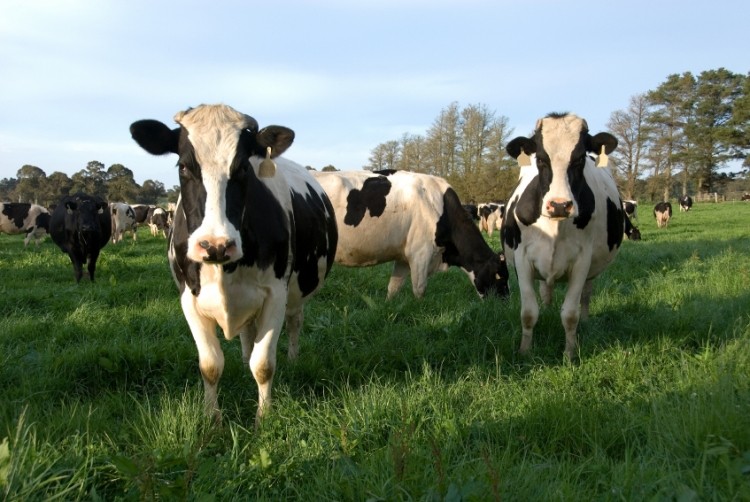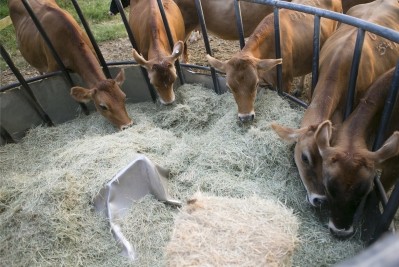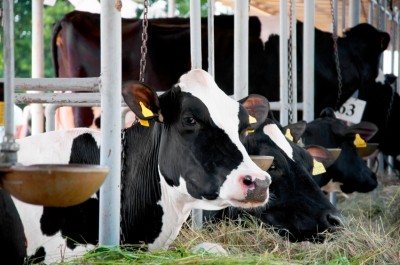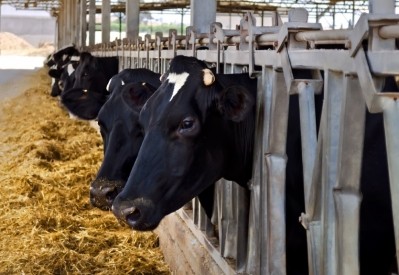Supplementing feed with larch sawdust may boost dairy cattle liver health

An international team of researchers added the supplemental larch sawdust to dairy cattle feed to examine the influence it would have on blood parameters along with milk production and composition, they reported in the Veterinary Journal.
Because this was a first test, the cattle used were healthy and in mid-lactation, they said. The cows were not subject to additional stressors during the experiment.
“The observed benefits, together with the good palatability, make larch sawdust a promising candidate for the development of beneficial feed supplements for livestock,” said the authors, who are based in Italy and Austria. “Further studies will be useful, particularly to evaluate its efficacy in different health conditions.”
Why larch
This is the first time that the byproduct larch sawdust has been added to cattle feed, said researchers.
The project sought to examine the product’s influence on dairy cattle because the tree is high in several biologically active compounds including arabinogalactans, lignans, flavonoids and diterpenes, they said. Some of the compounds have demonstrated antioxidant or immune boosting properties.
“Arabinogalactans, abundant in the genus Larix, are an excellent source of water-soluble prebiotic fiber,” said the researchers. “They have been approved as a source of dietary fiber by the US Food and Drug Administration (FDA) and were included in the European Union (EU) Novel Food Catalogue (Reg. 258/97). Moreover, arabinogalactans are reported to enhance immune defenses.”
Additionally, feeding the additive finds a benefit from a waste product and promotes sustainable use of plant-derived waste products, they said. When larch wood is processed, the sawdust is typically burned.
“The working hypothesis of this project was that such organic waste material still contains potential health-beneficial compounds, such as pectins, polyphenols, and flavonoids, and it can therefore be further used to produce high added-value products with possible specific activities,” said researchers.
Experiment details
For the study, 24 multiparous dairy cows were assigned to one of two feeding programs for 20 days, said researchers.
The feeds included a control diet and the control diet supplemented with 300g/day of larch sawdust that had been milled to a 0.5-1.5mm range and was stirred into the total mixed ration, they said. The control group received milled wheat straw as a supplement.
Cows were milked three times a day and results recorded, they said. Weekly feed samples were analyzed for dry matter (DM), crude protein, ether extract, minerals, neutral detergent fiber (NDF) and acid detergent fiber (ADF).
Milk samples from each cow were collected on days 0, 7, 14 and 20 to check for fat, protein, casein and lactose concentration, they said. And, blood samples were taken on day 0 and 20 to check for factors including total protein, albumin, globulin, total cholesterol, triglycerides, B-hydroxybutyrate, non-esterified fatty acids, glucose and urea.
Additionally researchers measured the concentration of reactive oxygen metabolites (ROM) and superoxide dismutase (SOD) activity.
Results
Milk contents and yield amounts were not affected by the treatment, said researchers. “We observed an interaction of day and treatment (P = 0.03) due to decreased concentration of milk urea nitrogen (MUN) in the larch-treated animals,” they added.
However, a lower total protein concentration in plasma was seen and has been linked to a decline in globulin concentration, they said. The concentrations of urea and glucose in the plasma also were reduced.
Liver function was influenced by the supplement, they said. But concentrations of ROM and the activity of SOD and glutathione peroxidase were not affected by the treatment.
“Total bilirubin was lower in larch-treated animals, and cholesterol tended to be lower,” said researchers. “In addition, an interaction between day and treatment was observed for very low density lipoprotein.”
What’s next?
The initial influence of the larch supplement on liver function and cattle health was promising, said researchers. However, additional work is needed to see what influence the supplement could have during a health challenge.
In particular, research could explore the influence on the peripartum period and weaning, during diseases challenges, health conditions and in long-term feeding use, they said.
“Furthermore, the potential influence of larch sawdust supplementation on animal products needs to be assessed and the pharmacokinetics of active larch sawdust constituents should be elucidated to evaluate their bioactivity and metabolic effects, with consideration of safety for animal product consumers,” they said.
The research was supported by the EU-funded research project SAFEWASTES.
Source: The Veterinary Journal
Title: In vivo assessment of an industrial waste product as a feed additive in dairy cows: Effects of larch (Larix decidua L.) sawdust on blood parameters and milk composition
DOI: published online before print: 10.1016/j.tvjl.2015.09.019
Authors: D. Tedesco, L. Garavaglia, M.S. Spagnuolo, E.M. Pferschy-Wenzig, R. Bauer, C. Franz










